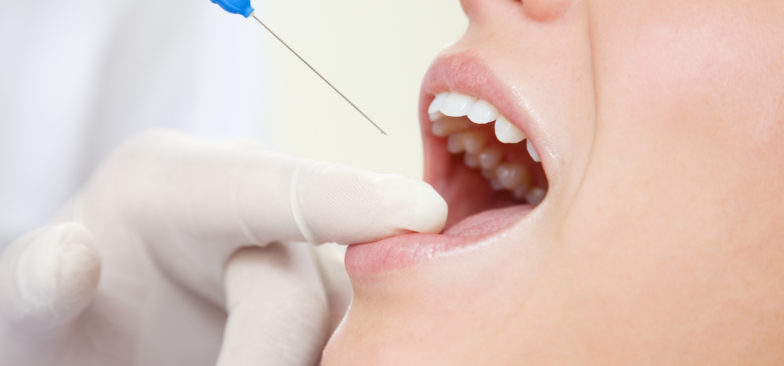A majority of people experience anxiety about visiting the dentist or receiving any dental work. At times, the anxiety can keep them from receiving proper dental care from the dentist. People have always associated dental work with pain and fearful dental tools. However, thanks to dental anesthesia, visiting the dentist is no longer something to fear.
Dental anesthesia will enable you to feel a sense of comfort and experience pain-free dental procedures. You will be able to undergo dental procedures you previously feared. Several methods can be used during a dental procedure, depending on your level of anxiety. Depending on the type of anesthesia, discomfort can be reduced in a significant way or even be eliminated completely.
Types of Dental Anesthesia
Local Anesthesia
Local anesthesia is one of the most commonly used anesthesia during dental procedures. It can also be referred to as novocaine. This type of medication can be administered through an injection, spray or ointment. With this type of anesthesia, the patient is awake during the procedure but sedated. Local anesthesia only lasts for a very short time, making it a perfect choice for minor dental procedures. It numbs the area during the procedure and controls post-surgery discomfort after the surgery.
Local anesthesia is considered very safe. However, it comes with a few side effects. The patient might experience dizziness, headache or muscle twitching.
Nitrous Oxide
Nitrous oxide, also known as laughing gas is one of the lightest forms of conscious sedation. The dentist administers it by breathing through the nasal mask. It is used in minor procedures since the body eliminates it within a very short period of time. Also, nitrous oxide can be regulated depending on the patient’s needs. If one would like to feel more of its effects, all they will have to do is breathe through the mask longer.
Nitrous Oxide comes with a few side effects. If too much of it is used, it can cause hypoxia. This is a subnormal amount of oxygen in the blood. Hypoxia can cause a patient to feel dizziness due to low oxygen in the blood. Also, it impairs the body’s ability to use vitamin B12 though temporarily.
Oral Premedication
Oral premedication is also conscious sedation. It comes in the form of a pill and mostly prescribed for minor dental work. Its effects can last anywhere between one and two hours. Oral premedication is generally safe and attracts very few side effects. Some people may experience some dizziness after using it.
Intravenous IV
This type of sedation is used especially when the patient has lots of anxiety since it offers deep sedation. It is the most effective type of sedation for reducing patient’s awareness and anxiety during dental work. Intravenous IV is administered using an intravenous line, therefore, making it effective due to its quick onset. The method is effective for patients who would love to be most comfortable during the procedure.
Intravenous IV is generally safe but can also have some side effects. Some of these side effects include an allergic reaction. Also, if not properly done, an infection can develop on the injection site.
Bottom Line
There you have it; as discussed above in the article, there are quite a number of dental anesthesia. Therefore, the fear of visiting the dentist due to pain and discomfort should be a thing of the past. Dentists can now perform dental procedures such as wisdom teeth removal with minimum discomfort to the patient. If you are looking forward to a wisdom teeth removal procedure, visit our dentist in Melbourne for a pain-free treatment.

